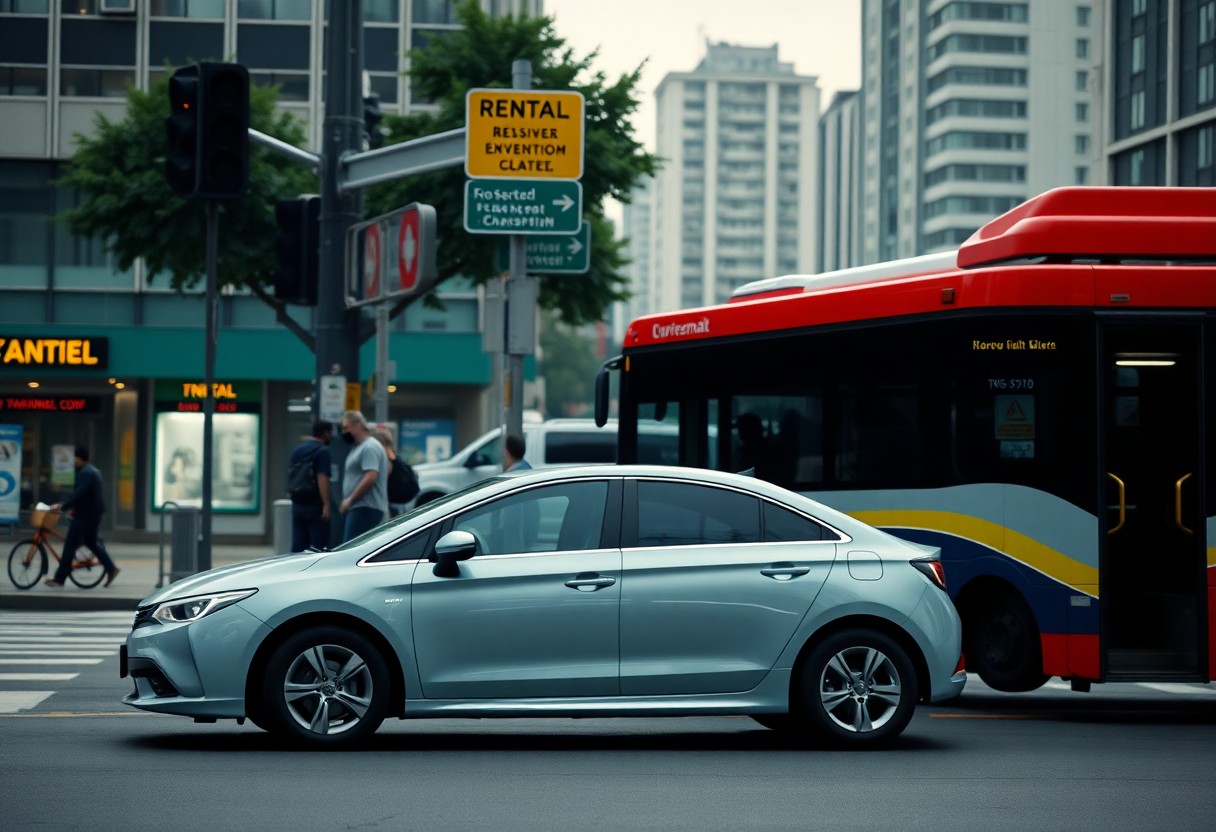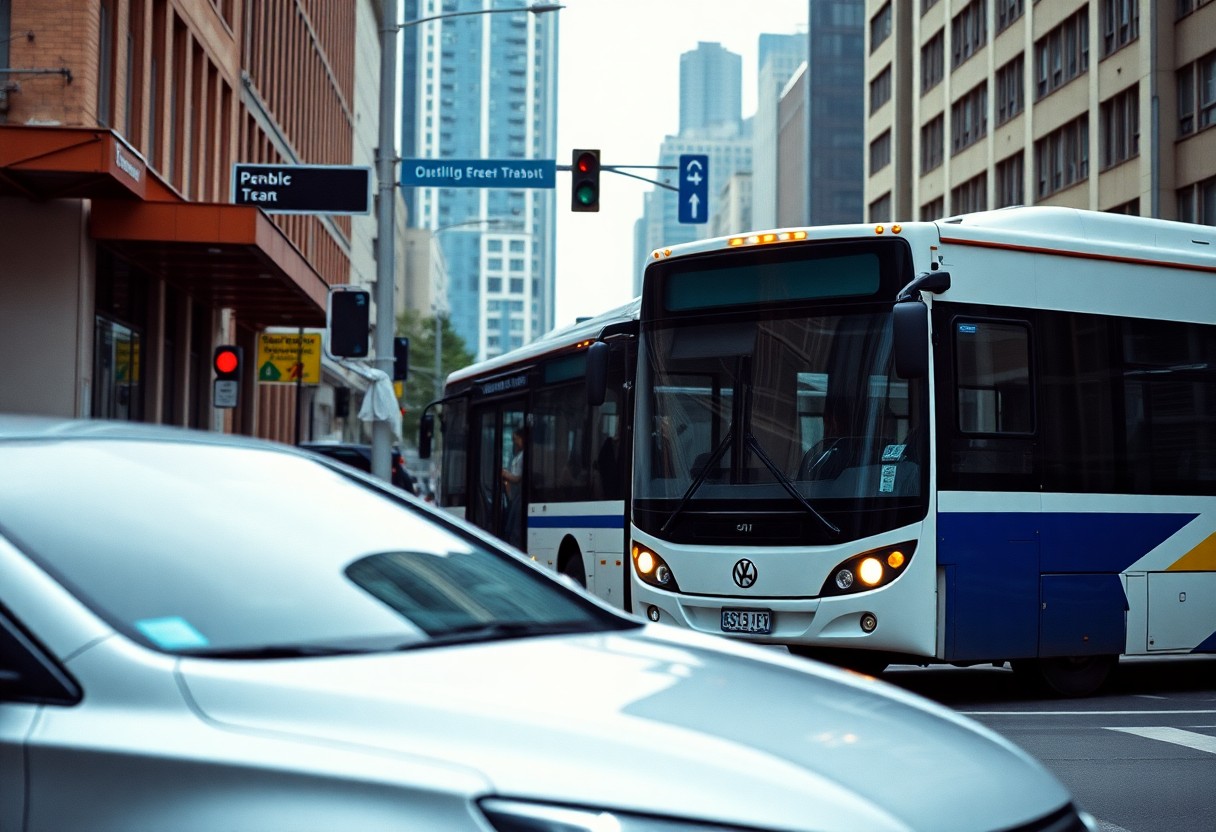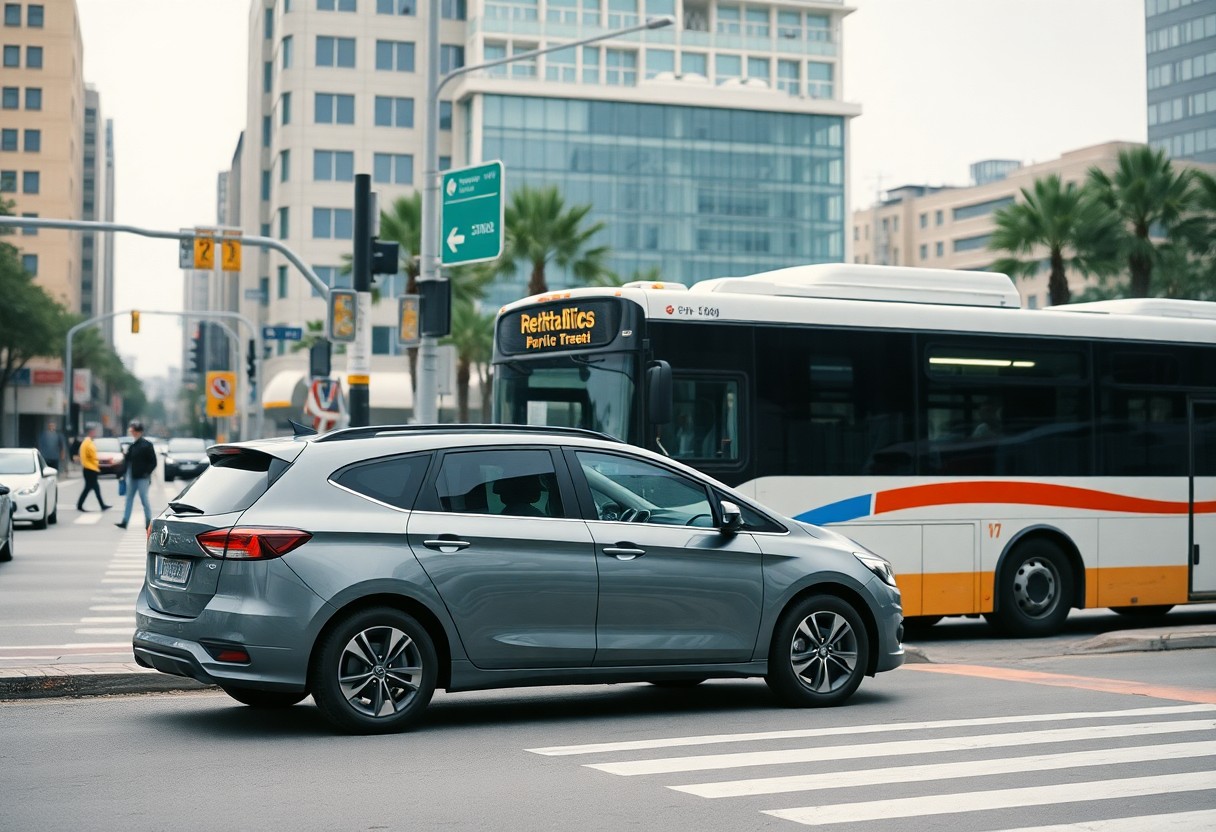With the rising costs of travel and the increasing value of personal time, choosing the right transportation for your journey is essential. This choice not only affects your budget but also shapes your overall travel experience. When planning your next trip, you'll face a pivotal decision: the freedom and flexibility of a rental car versus the cost-effectiveness of public transportation. Your decision will depend on various factors, such as your travel destination, itinerary details, and how many people are joining you. This detailed guide aims to help you navigate important considerations, including hidden rental fees and public transport accessibility, enabling you to make a knowledgeable choice tailored to your unique travel needs.
Unlocking the Freedom of Travel with a Rental Car
Choosing to rent a car grants you unparalleled independence during your travels. By securing a rental vehicle, you gain full control over your travel itinerary, allowing you to explore destinations well beyond the usual tourist hotspots. Recent surveys show that 73% of travelers favor rental cars for their ability to adapt plans on the fly, making this option especially enticing for those who value spontaneity and freedom in their travel experiences. With a rental car, you can venture into hidden gems, take scenic routes, or change your plans at a moment's notice, ensuring a more personalized adventure.
Evaluating the Pros and Cons of Renting a Car
Once you secure your rental vehicle, you’ll enjoy both remarkable freedoms and certain limitations. You can explore off-the-beaten-path locations and modify your schedule at will, yet it's crucial to be aware of potential parking fees (which can average between $25-$45 daily in busy urban areas) and the navigation challenges you might encounter. Your rental car acts as a personal sanctuary, but you will also be responsible for managing fuel costs and dealing with traffic conditions, which can sometimes be daunting. Thus, understanding these aspects is vital for a positive rental experience.
Uncovering Hidden Costs and Unforeseen Savings
Though the freedom of a rental car comes with a price, it can also lead to unexpected financial benefits. While initial rental fees might seem high, it's essential to understand that group travel can be more economical than buying individual tickets for public transport. Recent data suggests that families of four or more typically save 15-20% on transportation costs when opting for a rental vehicle instead of using public transit options.
Delving deeper into the financial aspects reveals other factors worth considering. Insurance premiums can add an additional $15-$30 per day to your rental costs, but many credit card companies offer rental car protection options that can mitigate this expense. Furthermore, the fuel efficiency of the latest rental fleets (averaging around 30-35 MPG) helps to reduce overall costs, while the convenience of door-to-door travel can save you significant amounts of precious vacation time.

Maximizing Your Experience with Public Transportation
If you choose to depend on public transportation, the first step is to gain a comprehensive understanding of the system. Most major cities now offer intuitive transit apps that help with route planning, real-time arrival updates, and ticket purchases. Familiarizing yourself with the local transit network is essential, including bus routes, subway lines, and transfer points. Research indicates that 55% of urban travelers can save as much as 30 minutes per trip by utilizing transit applications, making them invaluable tools for efficient navigation.
Strategically Navigating Urban Public Transit Systems
Every city's public transportation system has its own unique patterns and schedules. Expect to engage with peak hours, typically between 7-9 AM and 4-6 PM, when commuter traffic peaks. Therefore, your navigation strategy should include alternative routes, as delays are common during these busy times. Incorporating a buffer time of 15-20 minutes for essential appointments will help ensure you arrive on time and can manage the unpredictability of transit schedules effectively.
Engaging with the Social Dynamics of Public Transit
Beyond the logistical aspects, using public transportation provides a unique social experience. You will share space with both locals and fellow travelers, allowing you to immerse yourself in the local culture. While this can lead to occasional uncomfortable situations, it also offers valuable opportunities for cultural exchange. Studies show that regular public transit users develop enhanced social adaptability as they navigate various social interactions, enriching their travel experience.
Occasionally, you may find yourself navigating through diverse social situations while using public transport. From the bustling energy of rush hour to the quiet solitude late at night, each period presents its own unique atmosphere. Safety becomes especially important during off-peak hours, so remaining alert and choosing well-lit, populated areas for waiting is crucial. Most transit systems now offer 24/7 security monitoring and emergency communication systems to enhance your safety as you travel.
Analyzing the Financial Aspects of Your Travel Choices
When evaluating your travel options, a thorough budgeting process is paramount in deciding between rental cars and public transport. Transportation expenses can fluctuate significantly based on your destination, trip duration, and the number of travelers involved. While rental cars offer increased flexibility, they also come with hidden costs such as insurance, fuel, and parking rates. While public transit may seem more affordable at first glance, frequent daily rides can accumulate costs rapidly, necessitating careful consideration.
Breaking Down the Actual Costs of Driving
A financial analysis of car rentals reveals expenses that extend beyond just the daily rental rate. Be sure to factor in $30-$50 daily for insurance, average fuel costs of $40-$60 per tank, and potential parking fees that can soar to $50 per day in major metropolitan areas. Consequently, your total daily travel costs could range from $100 to $200, making this option more cost-effective when traveling in groups.
Decoding the Cost Structure of Public Transit Tickets
Initially, public transportation seems like the more economical choice. In cities like New York, where metro cards cost an average of $34 for unlimited weekly rides, substantial savings can be realized compared to the expenses associated with rental cars. Additionally, you can avoid additional costs such as parking and fuel, making public transit particularly advantageous for solo travelers.
Cost comparisons reveal that weekly public transport passes in many major cities range from $25-$40, providing unlimited rides. However, for families or groups of four or more, the total cost of multiple transit passes might exceed the cost of renting a car, especially when planning extensive daily travel or visiting areas with limited public transit options.

Streamlining Your Time Management for Travel Efficiency
As you evaluate the choice between rental cars and public transport, prioritizing your schedule is essential. A rental car enables direct, point-to-point travel, potentially saving you up to 40% of your travel time compared to public transportation. Your time is invaluable; while public transport may seem less expensive, it’s vital to consider the time spent waiting, transferring, and walking to and from stations, all of which can add up quickly.
Embrace the Freedom of Spontaneous Scheduling
When discussing time flexibility, a rental car provides you with total freedom over your departure and arrival times. You’re no longer bound by rigid transit schedules, allowing for spontaneous detours or last-minute changes to your itinerary. This level of flexibility is invaluable when plans shift unexpectedly or when you discover hidden gems while on your journey.
Overcoming the Challenges of Public Transport Timetables
One of the primary challenges of public transportation is adhering to established schedules. Research indicates that 23% of urban buses do not run on time during peak hours. Your travels may require multiple connections, and delays in one service can create a domino effect, disrupting your entire day’s plans.
To navigate public transport effectively, it’s prudent to allow extra buffer time. Transport experts recommend adding 15-20 minutes to your estimated travel time for each connection. During rush hours or special events, consider doubling these buffers, as they can significantly impact the time available for your planned activities.
Considering the Environmental Impact of Your Transportation Choices
When assessing your transportation options, it’s crucial to acknowledge the environmental implications of your decisions. A single-occupancy rental car emits approximately 404 grams of CO2 per mile, whereas public transportation can reduce emissions by up to 45% per passenger. The choice between renting a car and utilizing public transport has a lasting environmental footprint that deserves careful consideration.
Understanding Your Individual Carbon Footprint
Each mile traveled contributes to climate change and environmental degradation. A fully-loaded bus can replace the need for 50 cars on the road, significantly reducing overall carbon emissions. Your journey in a rental car can produce 4-5 times more CO2 than an equivalent trip by bus or train, although choosing electric or hybrid rental options can help lessen this impact.
Exploring Eco-Friendly Transportation Alternatives
Upon reaching your destination, you’ll find a variety of environmentally friendly transportation options. Electric car rentals can cut your carbon footprint by up to 50% compared to conventional vehicles. Additionally, many cities now feature hybrid buses and electric trams, making public transport an increasingly sustainable choice.
Thus, your environmental impact can vary greatly based on the transportation choices you make. Consider adopting a mixed-method approach—renting an electric or hybrid vehicle for longer trips while relying on public transport in crowded urban areas. Many rental agencies now offer green vehicle options, which allow you to maintain mobility while minimizing your ecological footprint.

Enhancing Comfort and Convenience During Your Travels
In contrast to public transportation, rental cars provide complete control over your comfort preferences. You can easily adjust the temperature, seating position, and audio settings to match your personal preferences, creating an ideal travel atmosphere. This level of customization is especially valuable during extreme weather conditions or lengthy road trips, where overall comfort can significantly enhance your travel enjoyment.
The Advantage of Personal Space in Rental Vehicles
One of the most significant advantages of renting a car is the guaranteed personal space it offers. You won't have to share your travel environment with strangers, as is often the case in crowded buses or trains, where personal space can shrink to less than 4 square feet during peak travel times. Your rental car becomes a private oasis, allowing you the freedom to control who shares your travel experience.
The Varied Comfort Levels of Public Transportation
Comfort levels on public transit can vary widely due to circumstances beyond your control. During busy hours, you might find yourself squeezed in with 150-200 passengers in a single subway car, significantly compromising your comfort. The experience often involves standing for extended periods, especially during the average 38-minute commute in large urban areas.
During a typical rush-hour scenario using public transport, you may encounter noise levels reaching around 80-90 decibels, comparable to the sounds of heavy city traffic. These conditions, combined with unexpected delays and service interruptions, can make your journey less enjoyable and more stressful, particularly if you're traveling with luggage or in a group.
Choosing the Best Transportation Option for Your Unique Travel Needs
Ultimately, your choice between renting a car and using public transport should align with your specific travel needs and preferences. If you prioritize flexibility and comfort while traveling with family or friends, a rental car usually offers the best value despite the higher initial costs. Conversely, public transportation is often an excellent choice for solo travelers on a budget who stick to well-defined routes in urban settings. Be sure to take into account factors like your destination, group size, planned activities, and budget. By carefully weighing these elements against your personal priorities, you can select the transportation option that best meets your travel goals.
The Article: Renting a Car vs. Public Transport: Which is Best for Your Trip? appeared first on https://rentacar24.org/
The Article Renting a Car vs. Public Transport: Choose the Best Option for You Was Found On https://limitsofstrategy.com



Comments are closed